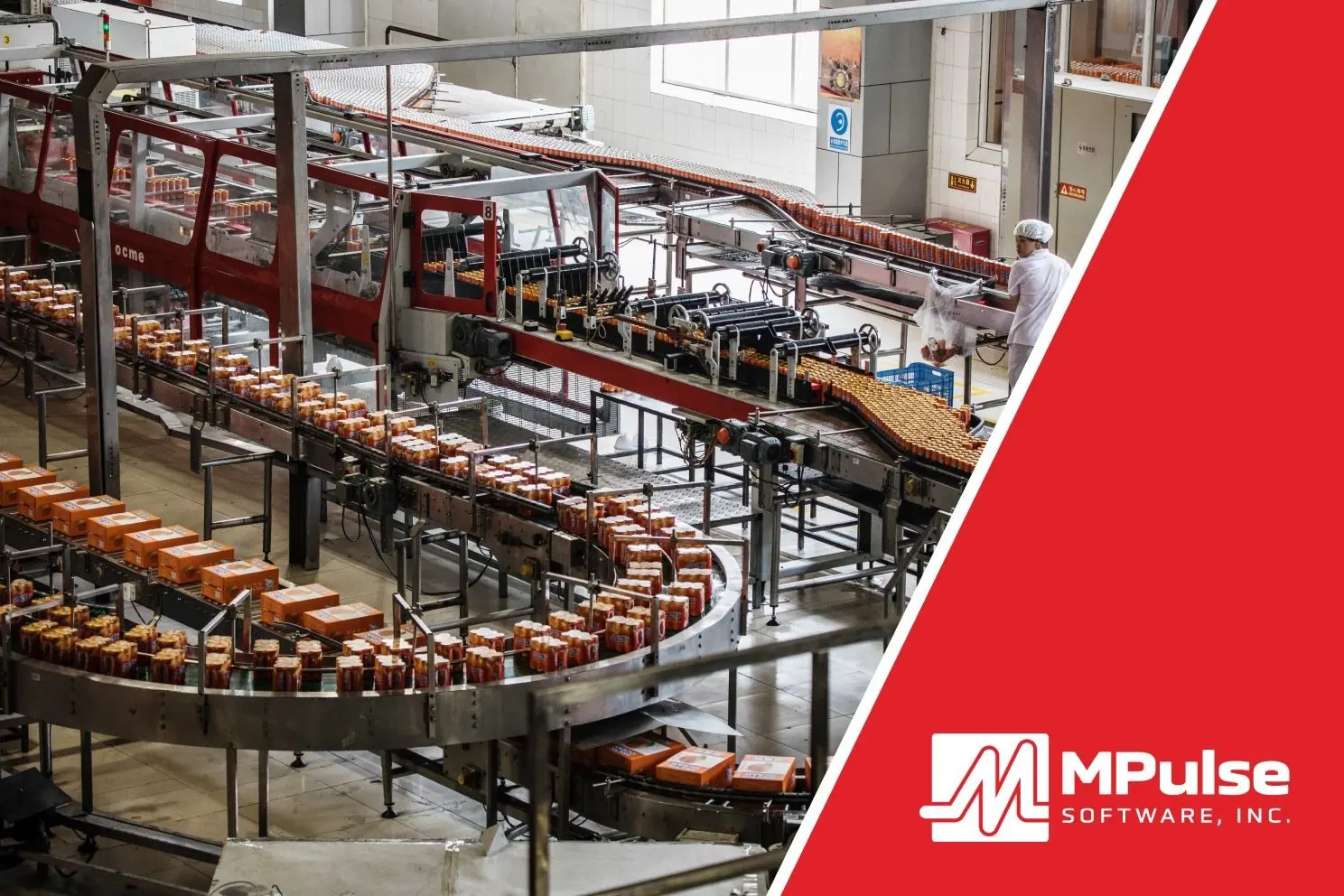CMMS software for food and beverage maintenance teams automates essential tasks, providing data-driven insights to enhance asset management and boost productivity. This specialized software also monitors equipment performance, reduces costs, and ensures compliance with strict regulatory requirements in the food and beverage industry.
How CMMS Helps with Food & Beverage Manufacturing Maintenance
The food and beverage (F&B) industry often faces challenges such as inconsistent maintenance performance reporting, emergency breakdowns, unpredictable costs, and time-consuming audits. CMMS addresses these by centralizing maintenance data—tracking maintenance history, equipment specifications, and spare parts inventory.
Many MPulse customers cite the following seven reasons for switching to CMMS in their F&B facilities.
Reason #1: Asset Management
CMMS enables better management of assets by providing detailed information about asset performance and maintenance history. In food and beverage manufacturing, tracking equipment is crucial for identifying potential problems early. This data allows food and beverage maintenance teams to make informed decisions, increasing asset lifespan, reducing breakdowns, and optimizing resource use.
Reason #2: Reduced Downtime
In F&B production and service, unplanned downtime can severely impact operations. CMMS software reduces this risk by automating preventive maintenance tasks, ensuring that equipment is regularly serviced to avoid unexpected failures. By analyzing asset performance, CMMS helps detect patterns that allow maintenance teams to address issues before they lead to costly downtime.
Reason #3: Inventory and Supplies Management
Efficient inventory management is vital in the F&B industry, where running out of parts can halt production. CMMS tracks spare parts inventory in real-time, ensuring that necessary components are always available when needed. This feature reduces the likelihood of downtime due to part shortages and optimizes inventory levels, cutting costs by avoiding excess or obsolete stock.
Reason #4: Regulatory Compliance for Food & Beverage Maintenance
F&B facilities must comply with multiple regulations across various levels. CMMS software streamlines compliance by maintaining digital records of maintenance activities, schedules, and reports. These records are invaluable during audits, providing clear evidence of adherence to industry standards and regulations. By automating this process, CMMS helps F&B facilities stay compliant with less manual effort.
Reason #5: Preventive Maintenance
Preventive maintenance is key to avoiding equipment failure in food and beverage operations. CMMS allows companies to create maintenance schedules based on time, usage, or part condition, ensuring tasks are completed in line with manufacturer recommendations. Regular inspections help detect minor issues before they escalate, improving efficiency, reducing energy consumption, and extending the life of critical assets.
Reason #6: Data-Driven
CMMS turns maintenance data into actionable insights. As a result, food and beverage maintenance teams can make decisions based on facts rather than relying on intuition. By collecting data from every work order, CMMS helps the maintenance team analyze trends. That makes it easier to determine when it’s more cost-effective to repair or replace equipment, and optimize operational strategies over time.
Reason #7: Food & Beverage Maintenance Cost Control
A well-implemented CMMS can significantly reduce food and beverage maintenance costs by reducing emergency repairs and production interruptions. By scheduling preventive tasks and understanding asset performance trends, F&B facilities can reduce overtime expenses for urgent repairs and avoid unplanned production losses. Additionally, CMMS helps schedule maintenance during off-hours, further reducing disruptions.
The Benefits of CMMS for Food and Beverage Maintenance
In summary, using CMMS in food and beverage manufacturing optimizes maintenance processes. That results in improved asset management and enhanced decision-making through data-driven insights. The right CMMS system can improve operations, reduce costs, and ensure smooth compliance with regulatory requirements.
Contact MPulse to explore how CMMS can transform your maintenance operations.


